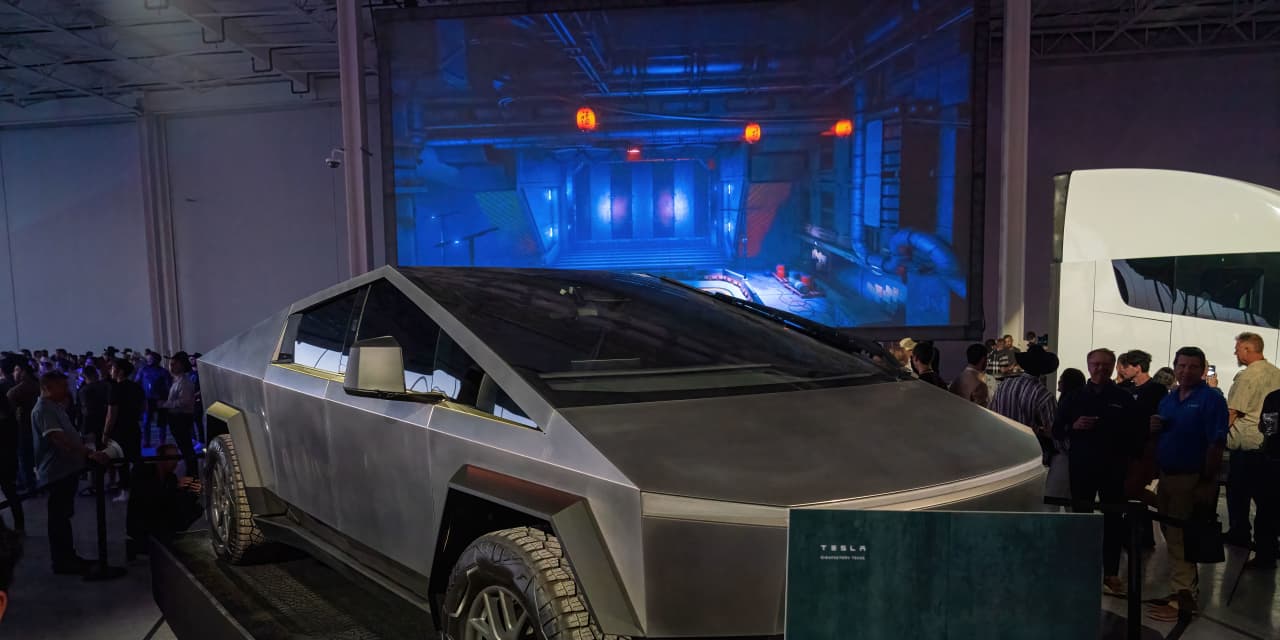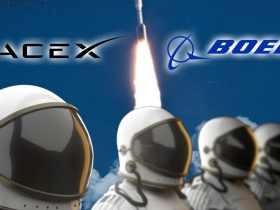The reaction to
Tesla
‘s Cybertruck was, well, “meh.” It’s a little pricey, it doesn’t go quite as far on a charge as people had hoped, its charging times are good but not great, and the cheaper versions won’t be around for months if not years.
The best Wall Street can muster about the
Tesla
new product launch is to say that the vehicle is acceptable.
“Let’s face it: the Cybertruck is not going to stand out against competition, on performance metrics, to the exception of the beast,” wrote New Street Research analyst Pierre Ferragu in a Saturday report. “Competition has narrowed the gap on energy density and architecture, even if it remains behind [Tesla].”
The beast is the Cyberbeast version of the truck, with three motors enabling it to accelerate from zero to 60 miles an hour in under three seconds. That’s faster than a
Porsche
911 GT3 RS even though the truck weighs about 3,000 pounds more. Still, the Cyberbeast starts at about $100,000.
The least expensive single-motor, rear-wheel drive version starts at about $60,000 and isn’t available until 2025, according to Tesla’s website.
The analyst added in his report that the range squeezed out of the battery pack implies Tesla is still more efficient than its competition. That represents some of the lead Tesla still has over car-making peers. But the price is 20% to 34% higher than initially envisioned in 2019, when the Cybertruck was revealed.
“The Cybertruck is a very significant product for Tesla, driving a lot of visibility, cult-like following and a platform for the introduction of breakthrough innovations,” concluded Ferragu. “It is not a material moving part for the financial performance of the company in the medium term, though.”
Some of those innovations are in manufacturing. Ferragu believes the stainless steel paneling and unibody design will be cheaper to manufacture. That isn’t reflected in the price of the truck though, because Ferragu thinks Tesla doesn’t want to ramp production up too fast.
CEO Elon Musk has called the truck difficult to build several times. Tesla vehicle engineering vice president Lars Moravy recently explained how Tesla had to invent a new process to bend the stainless steel grade selected by the company.
None of these fairly lukewarm observations come from Tesla bears. Ferragu is a Tesla bull, rating shares a Buy. His price target is $300 a share. Wedbush analyst Dan Ives is a Bull as well, also rating shares a Buy. His price target is $310 a share.
Ives called pricing in-line with his expectations in a recent report. He agrees with Ferragu, though, writing that Cybertruck doesn’t move the “financial needle in 2024.”
RBC analyst Tom Narayan is another Bull, rating the shares a Buy. His price target is $301 a share. Like his peers, he says Cybertruck looks OK. “This pricing is at the high end of what we expected,” wrote Narayan in a recent report. He doesn’t see more than 20% of the one million Cybertruck reservations turning into sales.
None of the problems with Cybertruck are causing any of the analysts to change their opinions, and that goes for the rest of the Street, too. There haven’t been any upgrades or downgrades of Tesla stock following the Cybertruck event. The average analyst price target is unchanged at about $240 a share.
That makes some sense. The event could have changed some minds if something in pricing or technology blew Wall Street away. In this instance, things just seemed to meet expectations.
Tesla stock was down 1.1% in midday trading while the
S&P 500
and
Nasdaq Composite
were down 0.7% and 1.1%, respectively. At about $236 a share, Tesla stock is down about $10 since just before the launch. Now shares are flat over the past week-plus of trading.
That is another lesson for investors. The stock market typically buys ahead of an event and sells after an event.
Write to Al Root at allen.root@dowjones.com
Read the full article here













Leave a Reply